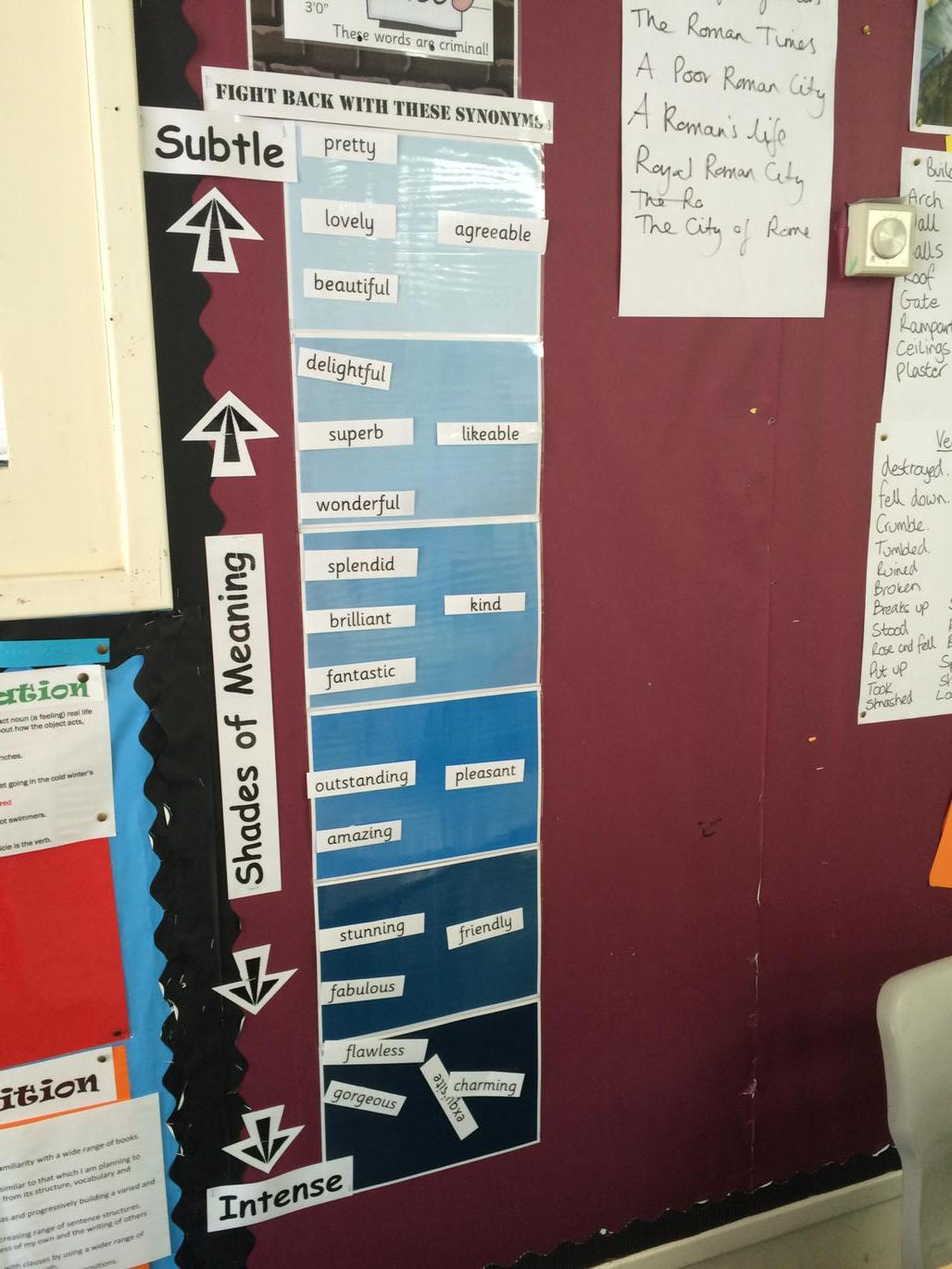I have just seen this tweet from @JaneConsidine .Thank you Jane!
You can find this and more on The Training Space website
Such an effective tools for literacy but also such an effective tool for target language learning- "shades of meaning from "subtle " to intense"
Time to get those bilingual dictionaries out again and this time pose the pupils individual tasks to find "shades of meaning" based on an adjective that they may or may not already know.
You will need 6 adjective cards and sufficient of these cards for one card each .The pupils will swap cards as they repeat the activity three times with different adjectives.
(Immediately adjectives such as small / big/ naughty/ beautiful/ sweet/ lively.....come to mind)
- Give them a blank piece of paper
- Ask them to draw the "shades of meaning scale" on the left handside and ask them to help you to locate the descriptors for "intense" and "subtle" in the bilingual dictionary.Can the pupils help you to work out how to say "subtle" and then ask all the class to put the key language on the scale but in the target language .(in this instance in a foreign language I think "subtle" means - a gentle type of adjective and "intense" means a powerfuland strong adjective.
- Now give each pupil an adjective card.They mjust decide whereabouts on the scale they would place this card - first of all they may need to find the meaning of the adjective!
- Set the class a time limit for the next search and ask them to think of 3 adjectives that mean something similar and then find these in the target language dictionary.they must record them on their scale by writing them down in the target language.
- Set up a new "shades of meaning" challenge with a new piece of paper and ask the children to swap adjective cards.Can they find 3 adjectives they think have similar meanings to this adjective? (e.g big - tall,large,huge).Whereabouts on the chart do they think these words fit?
- Repeat the activity one more time.
- Now invite pupils to give feedback as you read out one of the 6 adjective cards. Can they say whether the adjectives they have found linked to the original adjective are more or less subtle or more or less intense- in their opinions?
- How many different words have the class found?
- You could record these on a class "shades of meaning" list in the target language.
- Now you can encourage the pupils to alternate and use these new adjectives when describing people, things and places in speaking and writing.

No comments:
Post a Comment